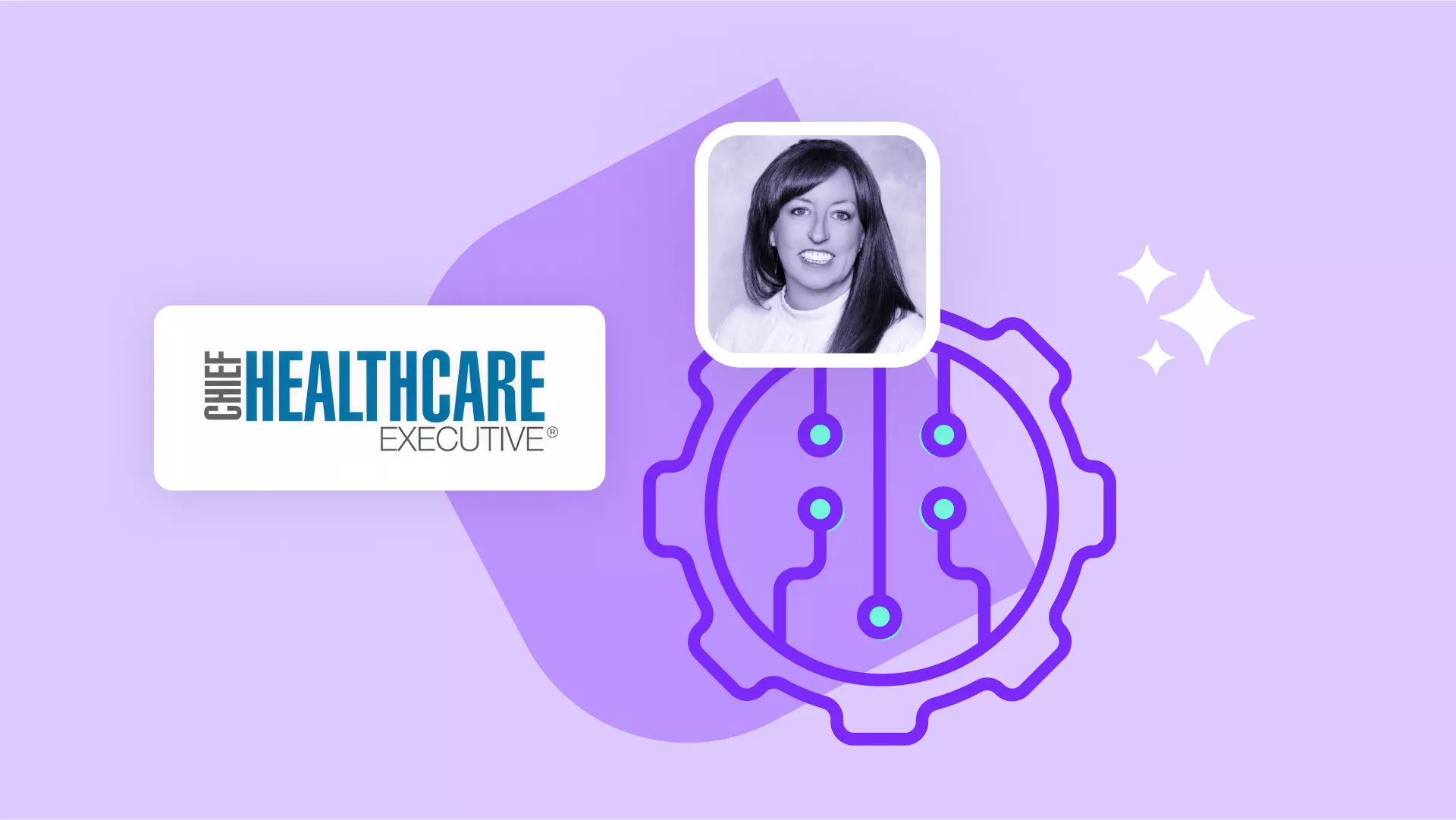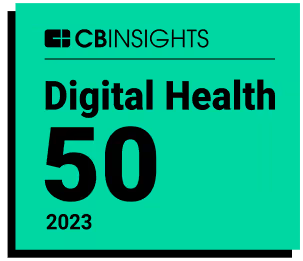How does risk adjustment work?
Risk adjustment plays a critical role in value-based care, ensuring providers are properly reimbursed for managing patients with varying health risks. This post explores the key differences between prospective vs. retrospective risk adjustment, and why healthcare organizations are shifting toward proactive approaches for better care and financial success.
What you will learn
- What are the key differences and advantages to each retrospective and prospective risk adjustment?
- What is concurrent risk adjustment, and how does it relate to retrospective and prospective risk adjustment?
- How does the distinction between retrospective and prospective risk adjustment affect both payers and providers?
- How does cutting-edge AI support thorough and efficient prospective risk adjustment?
Retrospective vs. prospective risk adjustment
Risk adjustment ensures fair reimbursement based on patient complexity. Retrospective and prospective approaches differ in how and when diagnoses are captured. Both have distinct implications for accuracy and outcomes.
Many healthcare organizations have long relied on retrospective risk adjustment. But with the rise of AI tools that automate much of the HCC coding process — even suggesting diagnoses at the point of care — prospective risk adjustment is now a more efficient and valuable approach.
What are the HCC coding review types?
The three types of HCC coding reviews are prospective, concurrent, and retrospective. Here’s an overview of all three:
Retrospective review
Retrospective risk adjustment means documenting HCC codes weeks or months after the patient visit. This labor-intensive review seeks to capture missed conditions but increases the risk of coding discrepancies.
Prospective review
Prospective risk adjustment entails documenting HCC codes at the point of care. Pre-appointment chart review can also be part of this process – helping ensure that the list of diagnostic codes is as complete and accurate as possible, without taking up unnecessary time during the appointment.
Concurrent review
Concurrent risk adjustment occurs after care has been provided but before a claim has been submitted. It is not typically used as an organization’s only approach, but rather as a supplement to retrospective and/or prospective risk adjustment.
Limitations of retrospective reviews
Retrospective risk adjustment methods pose various challenges. Here are some of the main hurdles:
Time-intensive chart reviews requiring substantial administrative support
In retrospective risk adjustment, much of the HCC coding tends to accumulate at the end of the year. Given how time-consuming it can be to code thoroughly with proper documentation, this can create a huge administrative burden for care teams.
Delayed identification of coding issues
Retrospective risk adjustment often occurs long after the patient visit. This delay risks compromising coding quality and can result in missed or forgotten diagnoses.
Manual retrospective chart reviews prone to human error
Retrospective risk adjustment is often done manually, without AI support to recapture codes or suggest diagnoses, increasing the likelihood of human error and incomplete documentation.
Missed opportunities in most payment models
Missed HCC codes can take a serious toll on healthcare organizations’ finances, making it far more difficult for them to thrive in the world of value-based care.
Incomplete capture of health conditions
Beyond its financial impact, incomplete risk adjustment can result in clinicians lacking a full understanding of a patient’s health, including conditions critical to delivering quality care.
Pro tip: Switching from retrospective to prospective risk adjustment isn’t just about changing when HCC coding occurs, but also how it is performed. It’s crucial to make sure that prospective risk adjustment is carried out accurately, thoroughly, and efficiently.
The strength of prospective coding
In contrast, prospective risk adjustment offers significant benefits to healthcare organizations, care teams, and patients. Here are some key reasons:
Improved risk score calculations
Documenting HCC codes as they arise helps ensure relevant diagnoses aren’t overlooked later in the year, and calculations are consistently up-to-date and accurate.
Better patient outcomes through a proactive approach
Proactive risk adjustment gives clinicians a fuller picture of patient health, supporting higher-quality care.
Early intervention opportunities
Prospective risk adjustment brings patients’ health issues to the attention of clinicians sooner, granting them additional opportunities to treat those conditions before they become more serious.
Real-time capture of chronic conditions
Many of the conditions reflected in HCC codes are chronic. When clinicians are increasingly aware of those conditions, that can help them improve the quality of the long-term chronic condition management that patients receive.
Enhanced coding practices
Prospective risk adjustment strengthens coding practices by embedding documentation into clinical workflows, reducing omissions, improving accuracy, and cutting administrative burden.
Pro tip: Build a culture of documentation excellence by training teams to prioritize complete coding at the point of care — this reduces downstream rework and delays.
What do plans and providers need to succeed in prospective risk adjustment?
Collaborative deployment
Success depends on close coordination between plans, providers, and technology partners to embed risk adjustment seamlessly into existing workflows.
List of suspects
Providing clinicians with a list of suspect conditions can guide efficient review and documentation at the point of care.
Patient outreach plan
Engaging patients ahead of visits ensures that outstanding conditions are addressed promptly, supporting comprehensive documentation.
Upstream clinical improvements
Improving clinical documentation practices upstream reduces gaps and supports accurate, real-time coding.
Incentives for behavior change
Financial or operational incentives aligned to proactive documentation can encourage sustainable adoption of prospective risk adjustment.
Pro tip: Leverage pre-visit planning with AI-driven suspect lists to maximize efficiency during face-to-face encounters.
What are critical data components in risk adjustment programs?
The information necessary to ensure that risk adjustment is thorough and accurate comes from multiple types of sources.
Clinical documentation
Much of the information needed for risk adjustment is located in the electronic health record (EHR) and other clinical documentation. The problem is that these records commonly include unstructured information spread across multiple systems. In some cases, the relevant details haven’t even been digitized.
Laboratory information
Results from lab tests can also shed light on patient conditions in ways that can improve HCC coding accuracy. But some of these results are hard to source within the EHR, and a lack of digitization can present a serious hurdle when it comes to accurate documentation for risk adjustment.
Claims analysis
Past claims can also provide insight into patients’ health conditions. Combining this information with data from lab results and other medical records can help make sure that HCC coding is both thorough and accurate.
How can health information technology simplify prospective risk adjustment?
Given the volume of information at the fingertips of clinicians and coders, risk adjustment is hampered less by a lack of data than by a lack of an easy, convenient, and efficient way to use the available data. That makes it particularly helpful to have AI-powered technology streamline and enhance the HCC coding process.
Machine learning for improved accuracy
Because HCC codes must be resubmitted annually in order to stay valid, recapturing relevant codes is a crucial part of risk adjustment. AI can help with this process by both identifying diagnosis codes from previous years (ie. recapture) and uncovering evidence on whether they’re still relevant.
AI-powered suspecting
In addition to recapturing HCC codes, robust risk adjustment involves diagnosing conditions that have not previously been documented. Navina’s AI stands out by surfacing evidence from patient records that suggests undocumented conditions. The high rate of clinician acceptance underscores its reliability and accuracy.
Seamless EHR integration at the point of care
Because prospective risk adjustment involves HCC coding at the point of care, it’s essential to embed AI within existing clinician workflows directly in the EHR to improve efficiency and care coordination.
Increased accuracy and efficiency in risk adjustment
Using AI proactively at the point of care can make a powerful difference in helping clinicians and coders streamline their HCC coding and ensure it is comprehensive and reliably accurate.
Pro tip: When shifting to prospective risk adjustment, reliable AI at the point of care can make a powerful difference by streamlining recapture and suggesting suspected diagnoses based on existing patient data.
The positive impact on patient care: Enhanced health outcomes
The more clinicians know about their patients, the better prepared they’ll be to provide the best possible care. A more complete list of HCC codes gives clinicians a better understanding of each patient’s overall health. When prospective risk adjustment delivers that information earlier, clinicians are better equipped to address health concerns promptly through screenings, prevention, and chronic care management.
The benefits for providers
Taking a prospective approach to risk adjustment makes HCC coding more accurate, complete, and time-efficient, which can have a powerful impact on healthcare providers. Empowering providers with AI at the point of care is a strategic must for maximizing prospective coding workflows and outcomes. By saving valuable time for clinicians, this approach can free them up to focus on delivering high quality care to each patient – allowing them to do what they love rather than struggling with a significant administrative burden.
A more thorough HCC coding record also delivers significant financial benefits, helping ensure providers receive the compensation they deserve — strengthening organizations’ ability to thrive in value-based care.
Key takeaways
- Retrospective risk adjustment occurs well after the patient visit, whereas prospective risk adjustment occurs at the point of care and may include pre-appointment chart review.
- A proactive, prospective approach benefits patients, clinicians, and healthcare organizations by improving coding accuracy and care quality.
- Prospective risk adjustment can significantly improve financial performance by ensuring organizations receive appropriate reimbursement.
- Prospective risk adjustment can ease clinicians’ administrative burden and ensure they have timely, complete patient information to deliver optimal care.
- AI-powered tools have made prospective risk adjustment more efficient, scalable, and feasible for healthcare organizations
Ready to unlock the full potential of prospective risk adjustment? See how Navina’s AI streamlines coding and empowers your clinicians — get a demo today.




.jpg)





.png)













